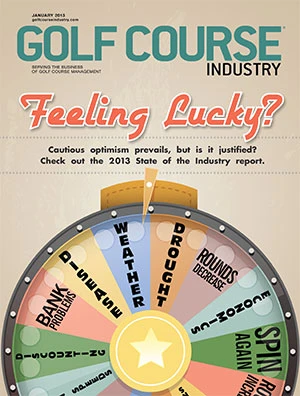 Pat Jones Pat Jones |
Ever since that September day in 1926 when a small group of greenkeepers gathered in Sylvania, Ohio, to form the GCSAA, we have been a profession driven by the spirit of volunteerism. Other than a few, well-funded exceptions, most chapters and turf associations are run primarily by superintendents who freely give their time and talents for the benefit of the larger profession. Our own Monroe Miller is a great example: he’s probably put in 5,000 hours into writing, editing and managing the Wisconsin GCSA’s “Grass Roots” magazine over his career and never received a dime. He did it because he was passionate about his profession and his association. But, times are changing in the industry and the non-profits that serve it. Nearly every association has seen revenues fall as trade shows have declined, advertising has contracted and memberships have shrunk. They’re being forced to operate in a leaner, meaner fashion. They’re also being asked to deliver proof of value more than ever before. Companies are demanding a return on investment instead of just blindly writing checks. The other casualty is the volunteer ethos that made us great to begin with has been weakened substantially. Fewer superintendents can devote time to their local chapters – even though they would love to – because of pressures to be focused on their real jobs or because they simply don’t have their facilities’ financial support anymore. I worry that younger folks aren’t getting involved. Where will the next generation of leaders come from? Fortunately, we’re lucky to still have a dedicated, core group of leaders who – year after year – volunteer for board service or for demanding jobs like government relations chair. It takes a remarkable person to accept what amounts to a second job and balance it with family and the occasional day off. I tip my hat to every one of you who serves as a volunteer leader. And that includes those who serve nationally, particularly on the GCSAA board of directors. Yes, there are perks to national service, but does anyone really believe those perks outweigh the time, the responsibility, the nasty emails and, most importantly, the risks posed to their jobs? Yet they serve anyway…and that’s something to be greatly admired no matter what you think about their policies or decisions. Now, as we approach the GIS, it’s important to recognize the most supreme challenge the national board and staff faces: how to manage the future of an association that has seen revenues decline dramatically. Overall, their revenues from membership, education, magazine advertising and sponsorships are down. But the critical fact is the show, which has been Elsie the Miracle Cash Cow for two decades, is slowly shrinking. In part, it’s because of the overall downturn in golf. Our market has stabilized and is growing a bit, but it won’t ever “come back” to the boom times we experienced in the ‘90s and early ‘00s. Anyone who tells you different is blowing smoke up your tailpipe. And even if there is an unexpected future resurgence in the development and maintenance business, the national show won’t just rev back up to previous levels. Why? Trade shows have been hurt badly by the Internet, the GIS has never been a “selling show” where exhibitors booked revenues and could clearly show ROI, and educational credits – long a key reason to attend the national and meander around the show – are now widely available and often cheap or free. So, the GCSAA leadership has to rethink their entire business model because just continuing to do the same thing is the surest path to failure. They have cut staff and services, they have dipped into reserves for operational funds year after year and they have raised dues. Hmmm…that’s exactly what a lot of golf facilities have done, too. How’s that working out for them? The bottom line is only about 2,500 superintendents will actually attend the San Diego show and industry partners have lots of other ways of talking to those well-known customers which don’t require a ludicrous sum of money to put up a fancy booth for two days. For most exhibitors today, continuing to participate in the show is either very expensive exercise in “supporting the association” or a very expensive attempt to avoid the “conspicuous by our absence” label. And that last rationale is starting to crumble a little. You might be surprised by a few of the well-known companies that don’t exhibit at all anymore. I’m rooting for a solution. Perhaps it’s a regionalized approach that makes superintendent participation easier. Perhaps it’s an every-other-year schedule. All I know is change has to come, and your hard-working national volunteer leaders are going to have to commit to that change sooner rather than later. |

Explore the January 2013 Issue
Check out more from this issue and find your next story to read.
Latest from Golf Course Industry
- Advanced Turf Solutions and The Aquatrols Company release soil surfactant
- Heritage Golf Group acquires North Carolina courses
- Editor’s notebook: Green Start Academy 2024
- USGA focuses on inclusion, sustainability in 2024
- Greens with Envy 65: Carolina on our mind
- Five Iron Golf expands into Minnesota
- Global sports group 54 invests in Turfgrass
- Hawaii's Mauna Kea Golf Course announces reopening





